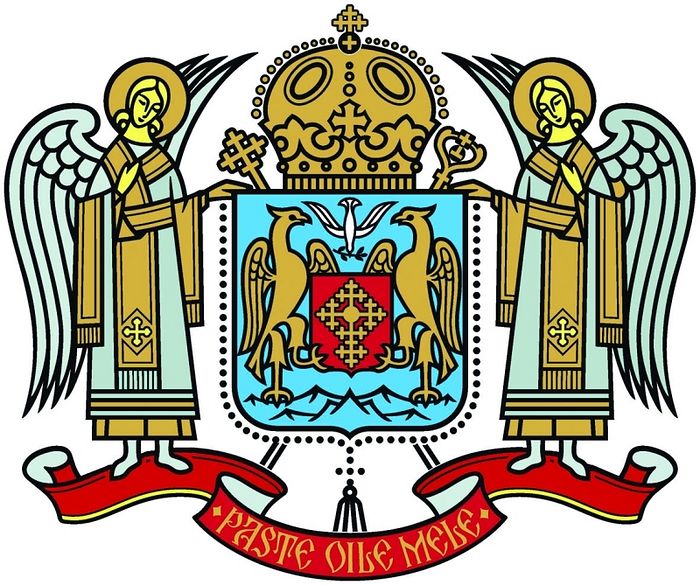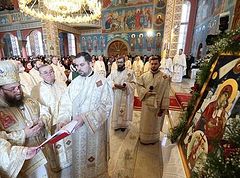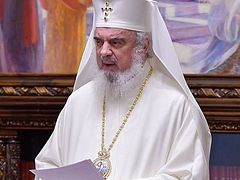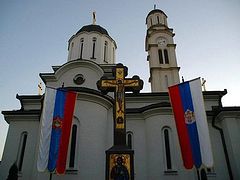Bucharest, April 27, 2020
On Bright Saturday, the Romanian Orthodox Church marked the 135th anniversary of its restored autocephaly, which was granted by Patriarchate Joachim IV of Constantinople on April 25, 1885.
The Church also celebrates the 95th anniversary of the restoration of its Patriarchate this year, reports the Basilica News Agency.
“After Romania gained its state independence in 1877 and was declared a Kingdom in 1881, the prestige of the Romanian Orthodox Church increased, making necessary the formal recognition of its autocephaly, long denied by the Ecumenical Patriarchate,” the official Romanian Church site writes.
Following the Union of Romanian Principalities in 1859, the Organic Decree for the Establishment of a Central Synodal Authority for the Affairs of the Romanian Religion was promulgated in 1864, stipulating that “the Romanian Orthodox Church is and remains independent of any foreign church authority, as far as organization and discipline are concerned.”
The same is stated in the Romanian State Constitution, promulgated on June 30, 1866, and in the Organic Law of the Romanian Orthodox Church of December 1872.
On November 23, 1882, the Holy Synod of the Orthodox Church of the Kingdom of Romania unanimously signed a Synodal Act making a historical and theological argument for the need to recognize the autocephaly of the Romanian Church.
In a lecture earlier this year, His Beatitude Patriarch Daniel explained that this Synodal Act “reviewed the relations between the Christian Church on the Romanian land and the Ecumenical Patriarchate, mentioning the establishment of the metropolises in the Romanian Principalities and underscoring how Romanians have always defended their Church autonomy against the arbitrary attempts of Constantinople.”
“The Constantinople Patriarchate has no supremacy over the Romanian Church. Romanians did not receive Baptism or the Christian teaching from Constantinople, nor their first bishops. The Christianity of Romanians is older than the very existence of Constantinople,” the Patriarch emphasized.
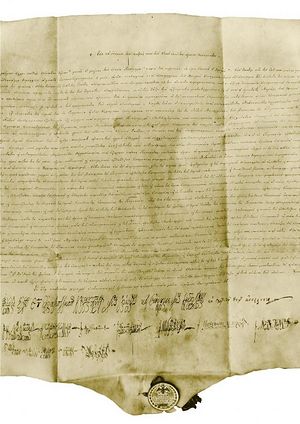 Tomos of autocephaly of the Romanian Church. Photo: basilica.ro Three years after the Synodal Act, Pat. Joachim IV, who was more open to negotiations with the Romanian Church hierarchy, sent the tomos of autocephaly to Bucharest on April 25, 1885.
Tomos of autocephaly of the Romanian Church. Photo: basilica.ro Three years after the Synodal Act, Pat. Joachim IV, who was more open to negotiations with the Romanian Church hierarchy, sent the tomos of autocephaly to Bucharest on April 25, 1885.
“The Ecumenical Patriarchate was placed before a fait accompli, and the act of recognition of the autocephaly of April 25, 1885, was a formal act, a recognition of a factual state that had existed for a long time. In Transylvania, the autocephaly of the Romanian Orthodox Church was expressed by the Organic Statute of Metropolitan Andrew Şaguna in 1868,” the Romanian primate noted.
The tomos recognizes the Romanian Church’s equal authority to the other Local Churches, calling its Synod a “Fellow Synod in Christ.”
“The Holy Synod of this Church is not subordinate to another ecclesial authority, but, the Holy Synod of an autocephalous Church must exercise this total freedom of church leadership, having an awareness of direct responsibility before Christ, the Head of the Church and the Eternal High Priest, as stated in the Tomos,” Pat. Daniel noted.
Last year, on Holy Thursday, members of the Romanian Holy Synod sanctified Holy Chrism for the 22nd time since the Romanian Church became autocephalous in 1885. The right to make its own Holy Chrism is one of the privileges of an autocephalous Local Church.
The entire text of the tomos of autocephaly of the Romanian Church can be read at Orthodox Synaxis.

